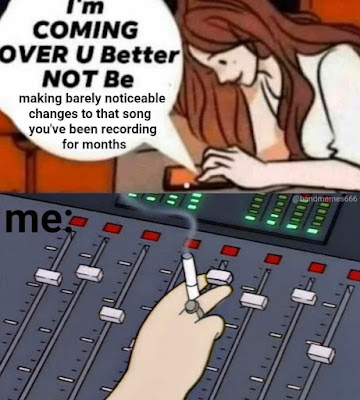naviarhaiku438 – heavy rain
Disquiet Junto 0543 Technique Check
The Disquiet Junto this week asks participants to "Share a tip from your method toolbox."
Hopefully I haven't done this already but it's a beaut tip I learned from David Graham.
It involves writing a bassline in 3/4 to go with a track in 4/4.
The result means the bass shifts each bar.
naviarhaiku437 – high noon
Disquiet Junto 0542 2600 Club
The instructions don't mention Joybubbles, who discovered this hack, but I was prompted to read about his life again.
I'd remembered it was a moving obituary when I encountered it and his life has only become more poignant to me.
Mostly though it was the discussion of Joybubbles retreat into childhood, which happened to a friend of mine in recent years.
So, as much as I wanted to write a tune worthy of Joybubbles aspirations, it ended up being tempered with a more sombre tone.
naviarhaiku436 – lightning thunder
My aim was to create a bassline that sounded like thunder and a rain-like synth part to go with scattered drums.
Disquiet Junto 0541 10BPM Techno
The Disquiet Junto project this week involves music at ten beats per minute.
When Marc tweeted he'd misread 10PM Show as 10BPM Show, I had an idea it'd be a Junto assignment.
We did one like this a while back and I discovered that Ableton Live only went down to 20 BPM.
It turns out my JX-08 also only goes down that far.
Sorry that it sounds a bit peak-y as I plugged it straight into my camera.
Anyway, since my internet has been off all afternoon and evening, I recorded my guess of the Junto assignment and missed making a slow techno tune with crowd noise.
Disquiet Junto 0540 5ive 4our
It took me a while to find my groove and I nearly didn't complete this project.
I've used a few of my Roland Boutiques and decided to use the SH-01A, although it's a bit noisy.
One night with Lucas Abela
And it was interesting to reflect on how the influence of his visits to the city continues to reverberate.


















